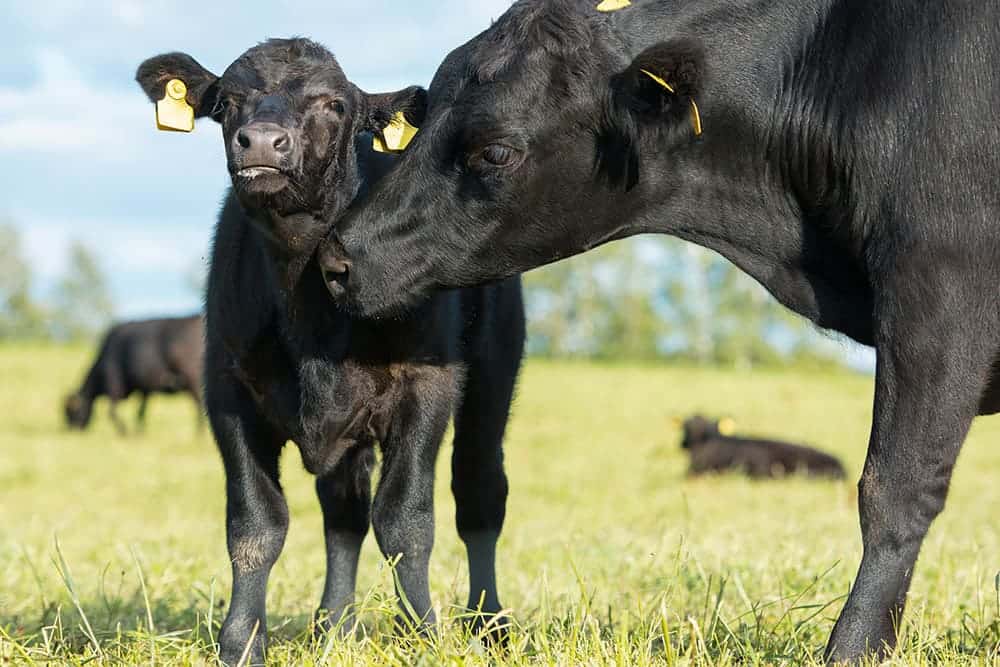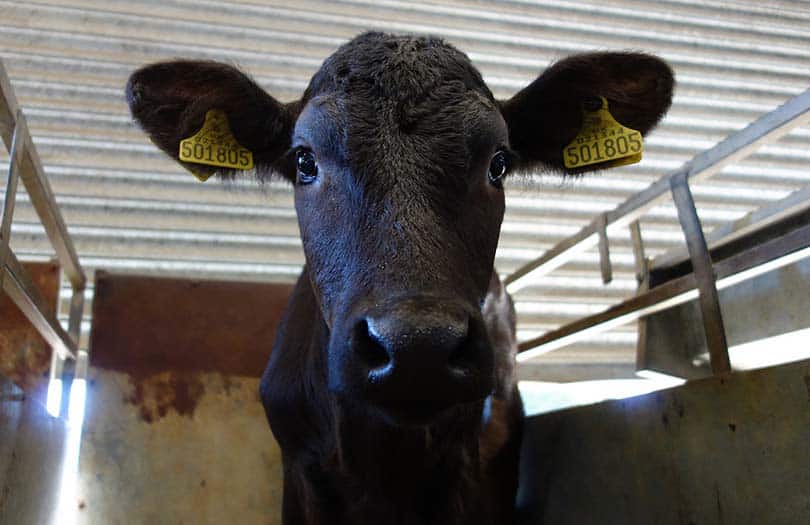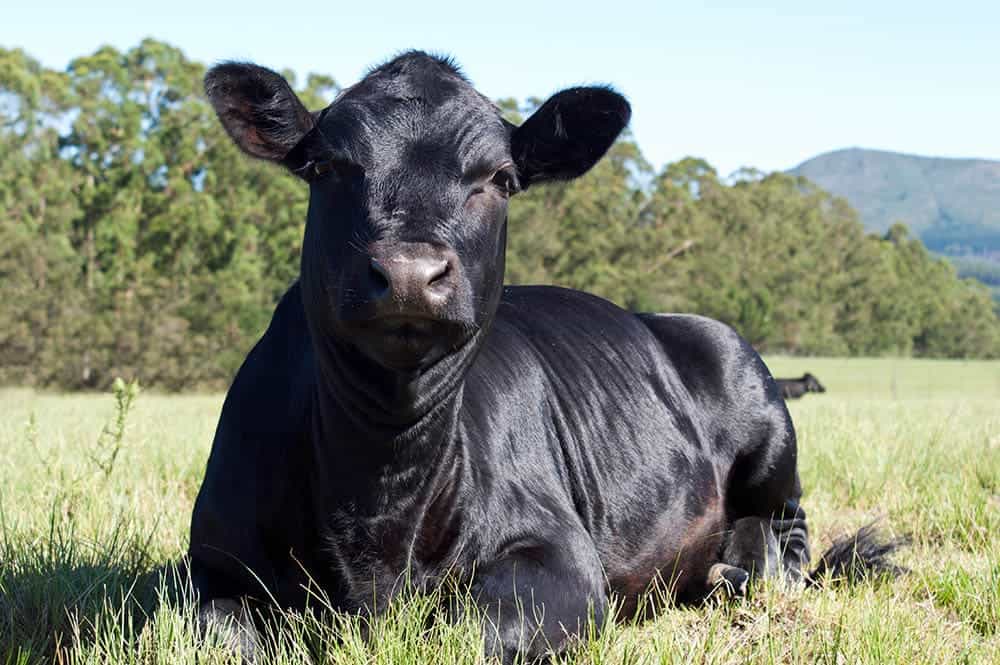The Aberdeen Angus is a small beef breed from Scotland, where they are native to the counties in the Northeast. Today, these cows remain quite popular and make up 17% of the beef industry in the U.K.
These cows have been exported to many different areas of the world, including the United States, South America, and New Zealand. From there, they have developed into varying different species, such as the American Angus. In some areas, these cows are bred to be larger than the original stock.
Since these cows have been crossed heavily with other, imported cattle, the original “pure” breed is considered to be at risk.

Quick Facts About the Aberdeen Angus
| Breed Name: | Aberdeen Angus Cattle |
| Place of Origin: | Scotland |
| Uses: | Beef |
| Bull Size: | About 1,870 pounds |
| Cow Size: | About 1,210 pounds |
| Color: | Black (or red) |
| Lifespan: | 15-20 years |
| Climate Tolerance: | High |
| Care Level: | Low |
| Production: | Beef |
Aberdeen Angus Origins
These cattle have been in Scotland for a long time, since at least the 16th century, when they were known as Angus doddies. For some time before the 1800s, these cattle were located in Angus and Aberdeenshire, hence their name.
However, the breed was not standardized into the breed that it is today until 1835, when William McCombie began to improve the stock. Many local names existed at the time for what was essentially the same cow, and some areas continue to use these names today.
The breed was officially recognized in 1835 and was registered in the Polled Herd Book. They didn’t become commonplace in the U.K. until the middle of the 20th century.

Aberdeen Angus Characteristics
The bulls are polled, which means they do not have any horns. This occurs naturally, not because the horns are removed.
They are extremely hardy because they were designed to survive Scottish winters. They are well adapted to harsh snowfall and storms, which are commonplace in Scotland.
They are a small breed, with cows usually weighing about 1,210 pounds and bulls weighing 1,870 pounds. Calves are typically born at a price that is too small to market. Therefore, for veal, the breed must be crossed with a different breed, usually a dairy cow.
These cattle mature quite early, especially compared to most other native British breeds.
Uses
These cattle are primarily used for meat. They are known for their extremely marbled meat, which is growing in popularity.
Their beef is often marketed as superior due to its heavily marbled appearance. It has become more and more mainstream, with an understanding that it is “higher quality” than most other types of beef.
Furthermore, the cattle are sometimes utilized for crossbreeding to make calves easier to deliver. Since this is a naturally polled breed, they produce naturally polled calves. This trait is dominant, so all their calves will be polled. Therefore, they are sometimes used to turn horned breeds into polled breeds.

Appearance and Varieties
Typically, these cows are black in color. However, in the middle of the 20th century, a new strain emerged that was red. Some areas accept these red cattle into the herd book, while others do not. It differs from area to area.
There are no genetic differences between the two colors besides the coloration. However, some areas see them as two separate breeds. There are some claims that the black Angus is more suited to colder climates, though this has not been studied.
This breed is naturally polled, so they do not have horns of any sort.
Population and Distribution
This breed has gotten extremely popular over the last few years. Their meat has become increasingly wanted on the market, which has led to the breed itself increasing in popularity. They are currently spread throughout the world, though they are most common in the United States.
The cattle were first brought to the United States in 1873. At this time, only four bulls were imported and used for crossbreeding. However, this raised awareness about the breed and caused many cattle of both sexes to be imported.
In Germany, this breed was used to create the German Angus. Other countries have crossbred them with other cattle, improving their meat quality and making polled breeds.


Our Aberdeen Angus Cattle Good for Small-Scale Farming?
Since these cattle are small and unlikely to have health problems, they are often great for small-scale farming. Calves are born small, so the cows usually don’t need much help. They also make good mothers, which makes the herd easier to take care of in general. These cattle can calve easily, even in harsh conditions.
These cattle aren’t exactly “miniature,” but they are smaller than most other breeds. Therefore, they need less land to function on, making them easier for small farms.
Featured Image Credit: Catherine Eckert, Shutterstock
